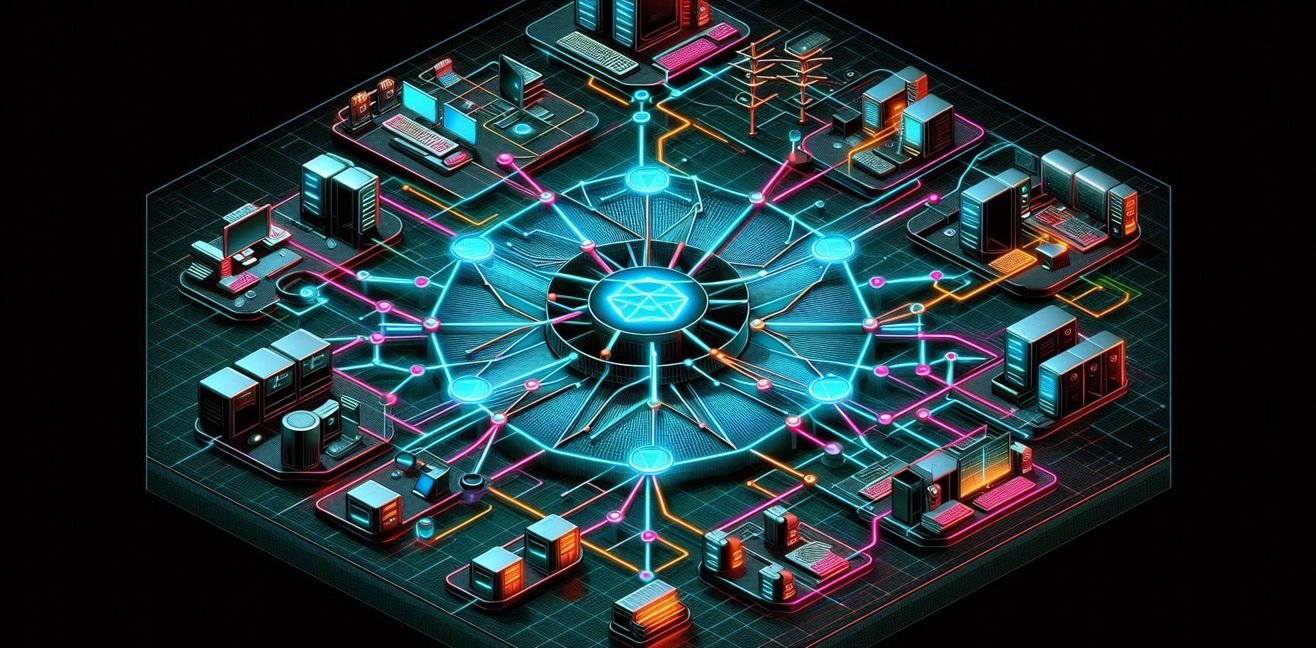Hello tech enthusiasts! 💻 Today, we’ll explore the map-reading ability of computer systems, also known as network topologies, in detail. Our goal is not just to provide technical information, but also to make it fun and easy to understand with examples and real-life metaphors. 🎭
🔹 What is a Network Topology?
Simply put, a network topology is a “map” that shows how computers and devices are connected.
- Nodes: All units connected to the network, such as computers, servers, switches, or IoT devices.
- Links: Physical cables or wireless channels connecting the nodes.
- Routing: The path that data takes across the network.
Topology directly affects data transmission speed, security, and scalability. 🌟
Tree, star, or spider web? Systems choose their paths! 🌳⭐🕸️
🔹 Star Topology
- Definition: All devices connect to a central hub, switch, or router.
- Advantages:
- A single device failure does not affect the entire network.
- Easy network management and monitoring.
- Security can be enforced via the central hub.
- Disadvantages:
- If the central hub/switch fails, the whole network goes down.
- Network load on the central device increases as the network grows.
- Technical Notes:
- Using a hub may cause data collisions (collision domain).
- Using a switch reduces collisions via segmentation.
- Real-Life Metaphor:
“All friends enter the party through one door. If the doorman is working, everyone’s happy; if not, everyone waits.” 🚪🎉
🔹 Ring Topology
- Definition: Each device connects to the next, and the last device connects back to the first, forming a ring.
- Advantages:
- Data flows in order, reducing collisions.
- Protocols like token ring prevent data collisions.
- Disadvantages:
- If a device fails, data flow can stop (modern rings can bypass this).
- Technical Notes:
- Token Passing Protocol: Only the device with the token can send data → prevents collisions.
- Used in FDDI and SONET/SDH networks.
- Real-Life Metaphor:
“A chain of notebooks: each person writes on their page and passes it to the next. If someone misses a page, the chain breaks.” 📓🔗
🔹 Bus Topology
- Definition: All devices connect to a single data line (backbone). Data flows along this line.
- Advantages:
- Easy and inexpensive to set up.
- Effective and simple for small networks.
- Disadvantages:
- Data collisions may occur (managed via CSMA/CD).
- If the single line fails, the entire network is affected.
- Technical Notes:
- Early versions of Ethernet commonly used bus topology.
- Terminators are required to prevent signal reflections.
- Real-Life Metaphor:
“Everyone gets on a single bus. If the driver stays on route, everyone reaches their destination. If the bus breaks down, everyone waits.” 🚌💥
🔹 Mesh Topology
- Definition: Every device connects directly to every other device.
- Advantages:
- Extremely high redundancy; if one link fails, data can take alternative paths.
- High network security and resilience.
- Disadvantages:
- High installation cost and cable complexity.
- Management and maintenance are harder.
- Technical Notes:
- Full mesh: every node connected to all others.
- Partial mesh: some nodes directly connected, others indirectly.
- Load balancing and routing protocols (OSPF, BGP) play a critical role.
- Real-Life Metaphor:
“Like a giant spider web! Each node is connected to others with spider threads. If one thread breaks, the rest remain intact.” 🕸️🕷️
🔹 Hybrid Topologies
- Definition: Combination of different topologies, e.g., star + mesh or star + bus.
- Advantages:
- Optimizes scalability and resilience.
- Common in enterprise networks and data centers.
- Disadvantages:
- Increased complexity and cost.
- Technical Example:
Large data centers often use mesh backbone + star access layer.
🔹 Factors to Consider When Choosing a Topology
- Network Size: Small office → Star or Bus; Large enterprise → Mesh or Hybrid
- Security: Centralized control or distributed?
- Performance: Data flow speed and redundancy requirements
- Cost: Cabling, number of switches/routers
- Manageability: Monitoring, maintenance, and expandability
🎭 Humorous Summary
- Star: Central leader → Single entry 🎉
- Ring: Notebook chain 📓
- Bus: Single bus 🚌
- Mesh: Spider web 🕸️
- Hybrid: Mixed party → everyone knows their path and others’ too 🎊
💡 Tip: Critical and high-performance networks prefer mesh or hybrid topologies, while small offices are fine with star or bus.
🚀 Bonus Technical Notes
- Network topologies can differ physically and logically. For example, logically ring, physically star.
- Spine-leaf architecture is a modern hybrid topology used in large-scale data centers.
- Network simulation tools (Cisco Packet Tracer, GNS3) are excellent for testing topologies.




